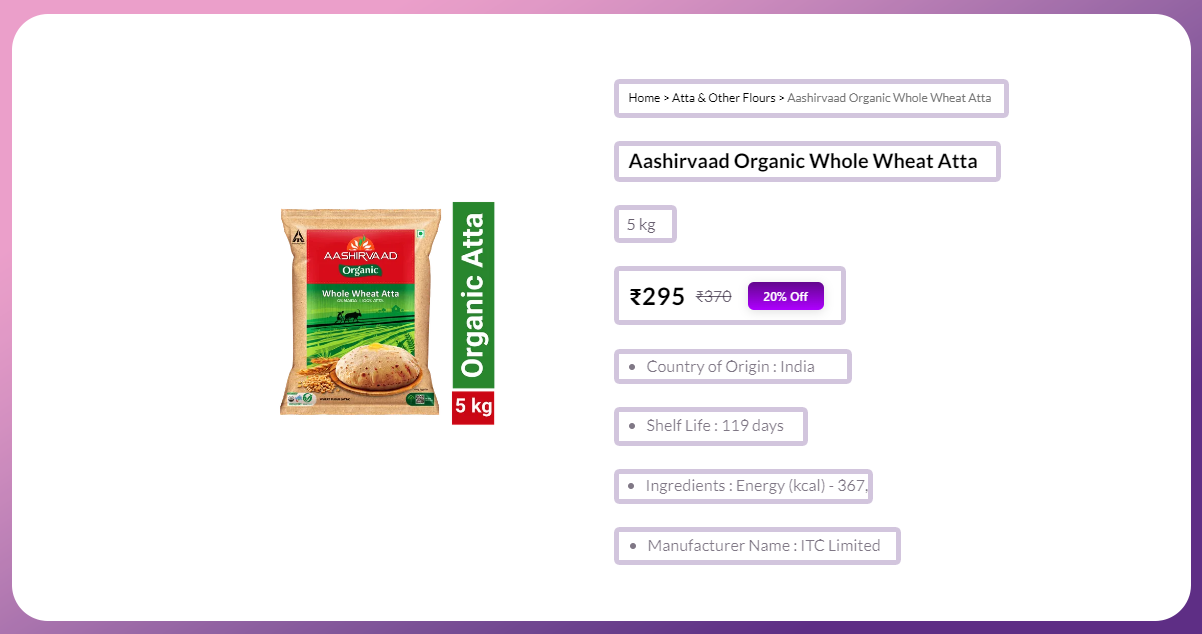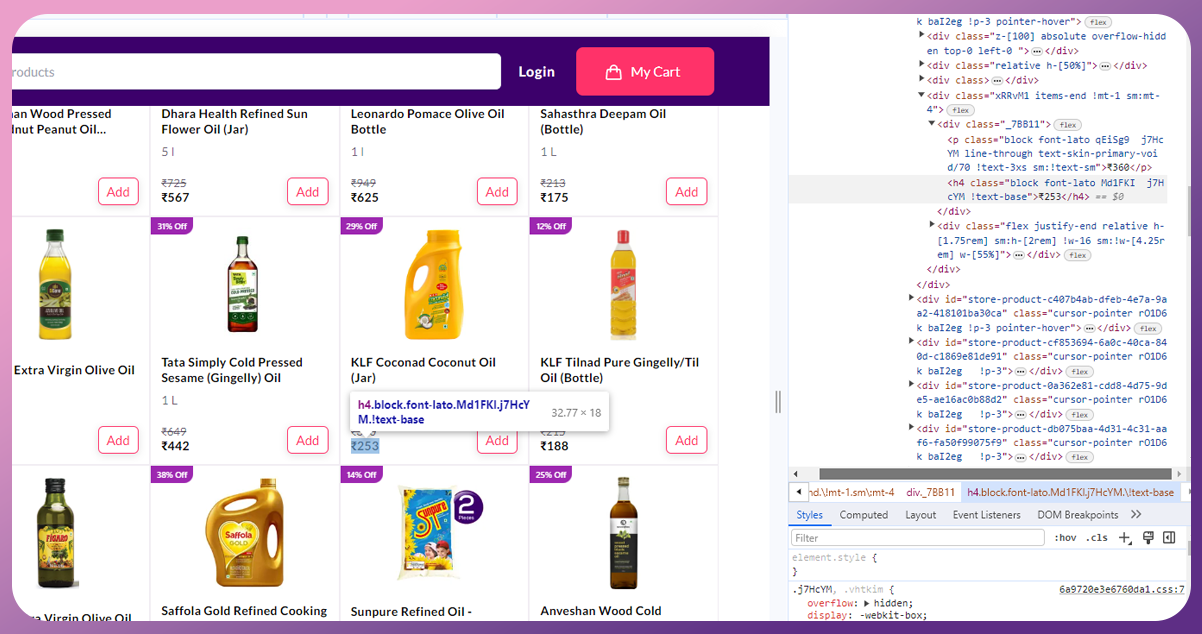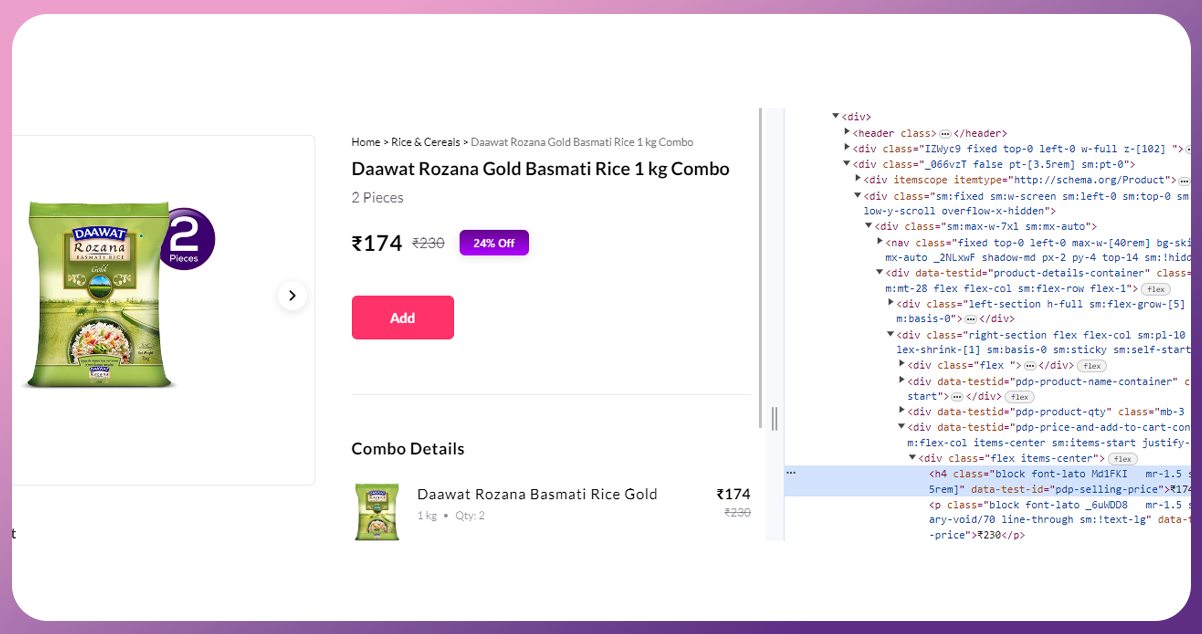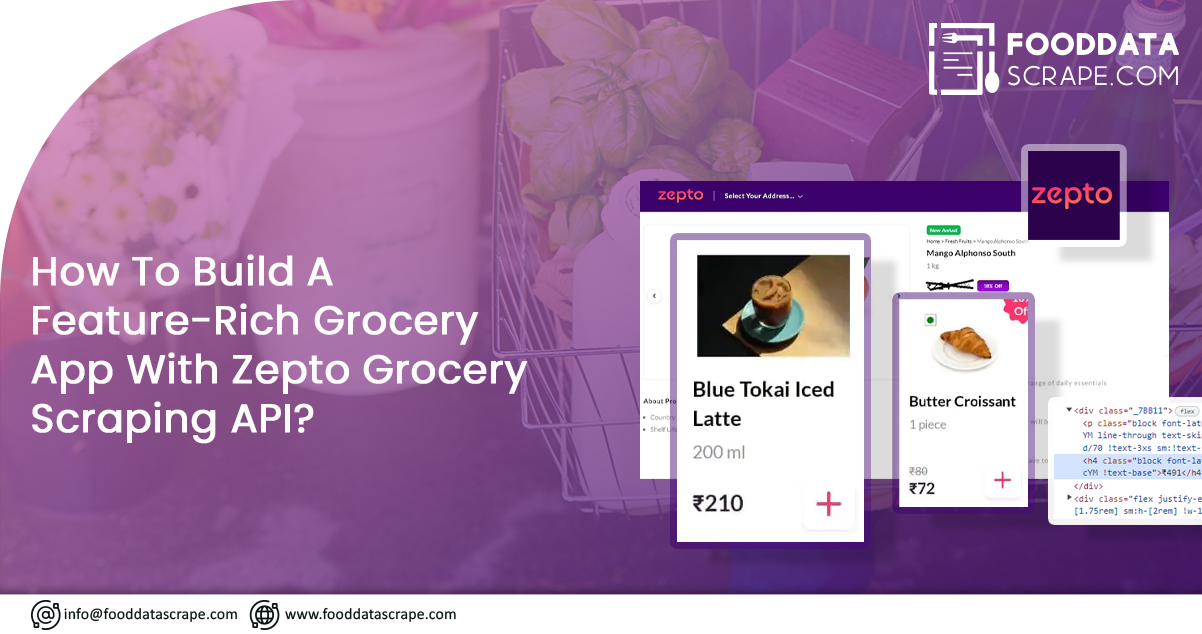Scraping data from Zepto API involves extracting valuable information from Zepto's application programming interface. This process allows businesses and developers to access and utilize data, ranging from real-time updates to specific functionalities, depending on the API's capabilities. Zepto's API scraping can provide insights, automate tasks, or integrate data seamlessly into applications, enhancing efficiency and decision-making. However, when utilizing this data, it is crucial to adhere to Zepto's API usage policies and terms of service to ensure a compliant and ethical approach to data extraction and utilization.
List of Data Fields

- Product Name
- Product Description
- SKU
- Price
- Availability
- Brand
- Category
- Ratings
- Reviews
- Order ID
- Order Status
- Email Address
- Operating Hours
- Review Text
- Discounts
- Coupons
Overview of Zepto API

Zepto API scraping helps businesses and developers access valuable data from the Zepto platform, enhancing their ability to make informed decisions and provide a more seamless user experience. By leveraging this API, users can scrape online grocery delivery app data related to product availability, pricing, and delivery times, allowing for the creation of custom applications, price comparison tools, and inventory management systems. This data-driven approach empowers businesses to stay competitive in the fast-paced world of e-commerce, improve supply chain logistics, and offer their customers up-to-the-minute information on product options and delivery schedules. With the Zepto grocery scraping API, businesses can streamline their operations and provide a more efficient and satisfying shopping experience for their customers.
Features of Zepto API

- Authentication: This feature is crucial for security. It involves methods and mechanisms that verify the identity of users or applications accessing the API. Standard authentication methods include API keys (unique tokens for identifying applications), OAuth (a standard for authorization), and other authentication protocols like JWT (JSON Web Tokens) or OAuth2.
- Endpoints: Endpoints are specific URLs or URIs that define the available functionalities or resources that the API provides. These endpoints are helpful to perform actions or retrieve information. For example, an e-commerce API may have endpoints for getting product details, placing orders, or checking order status.
- Data Formats: APIs communicate data in specific formats, often JSON (JavaScript Object Notation) or XML (eXtensible Markup Language). This information informs developers about the data structure they can expect when interacting with the Zepto data scraper.
- Rate Limiting: Rate limiting limits the number of API calls a user or application can make within a defined time frame. It helps prevent abuse of the API, ensures fair usage, and maintains system stability.
- Webhooks: Webhooks are mechanisms for enabling real-time communication. They allow the API to notify external systems or applications about events or updates. Developers can set up webhook endpoints to receive these notifications
- Error Handling: Effective error handling is critical for developer-friendly APIs. It involves transparent and standardized error messages or status codes that indicate the nature of the problem. Developers can use this information to diagnose and resolve issues in their applications.
- Documentation: API documentation provides comprehensive information to developers, including detailed descriptions of endpoints, expected request and response formats, usage examples, and any special considerations. Well-documented APIs are more accessible for developers to work with.
- Security: Security measures are fundamental to protect the data and transactions facilitated by the Zepto data scraping services. These measures may include encryption (e.g., HTTPS for secure communication), data access controls, and other data protection practices to safeguard sensitive information.
- Versioning: APIs evolve, and versioning helps manage these changes. It allows developers to continue using older API versions while adapting to newer ones at their own pace, ensuring backward compatibility and a smooth transition.
- Testing and Sandbox Environment: A sandbox or testing environment is a safe, isolated space where developers can experiment with the API without affecting the production system. It allows for thorough testing and development before going live with applications.
- Support and Community: Robust support resources, such as developer support channels, forums, or communities, provide a place for developers to seek assistance, share insights, and collaborate with others working with the API.
How to Collect Real-Time Grocery Data Using Zepto API?

- Access API Documentation: Start by accessing Zepto's official API documentation. It will be your primary resource for understanding the endpoints, authentication methods, data formats, and other technical details of the API.
- API Authentication: Review the authentication methods required by the Zepto API. Typically, you'll need to obtain API keys or credentials to access the data. Follow the authentication process outlined in the documentation.
- Understand Endpoints: Study the available API endpoints related to grocery data. These endpoints may include searching for products, retrieving prices, checking stock availability, or tracking deliveries. Each endpoint will have a specific URL and request parameters.
- Make API Requests: Use programming languages or tools to make API requests. You can use libraries like Python's requests or tools like Postman to send requests to the API endpoints. Ensure you include the required headers and authentication information in your requests.
- Handle Responses: Process the responses from the API. Typically, APIs respond with data in a structured format, such as JSON or XML. Parse this data to extract the grocery information you need.
- Rate Limiting: Be aware of any rate limits imposed by the API. Stay within the allowed number of requests within a specified time frame to avoid being temporarily blocked.
- Implement Real-Time Updates: Scrape Zepto grocery data supports real-time updates or webhooks. Set up the necessary endpoints on your side to receive instant notifications of changes in grocery data, such as new product listings or stock availability.
- Data Storage and Analysis: Store the collected data in your database for further analysis and use. You can use databases like MySQL, MongoDB, or cloud-based solutions for data storage.
- Error Handling: Implement error handling to manage unexpected responses or issues with the API. The API documentation should guide error codes and their meanings.
- Testing: Before deploying your application or system that uses the Zepto API for real-time grocery data, thoroughly test your integration in a development or sandbox environment to ensure it works as expected.
- Compliance and Terms of Use: Ensure that you comply with Zepto's terms of use and any legal or ethical considerations related to collecting and using the data.
- Monitoring and Maintenance: Regularly monitor your integration for performance and data accuracy. Be prepared to adapt to changes in the API or data format as Zepto updates its services.
Why Scrape Zepto Grocery Data?

Scraping Zepto grocery data serves many valuable purposes in today's data-driven world. It provides businesses and retailers with a competitive edge by enabling them to track real-time information on product availability, pricing, and stock levels. This data can inform inventory management, pricing strategies, and marketing campaigns, leading to optimized operations and enhanced customer experiences. Additionally, data scraped from Zepto can be leveraged for market research, allowing businesses to stay attuned to consumer preferences and market trends. For consumers, scraping Zepto data can aid in making informed purchasing decisions, helping them find the best deals and products in real-time. Furthermore, developers can utilize this data to create innovative applications, price comparison tools, and other services that bring greater convenience and efficiency to online grocery shopping. In summary, scraping Zepto grocery data is instrumental in enhancing business intelligence, customer satisfaction, and innovation in the grocery retail sector. To access comprehensive insights, don't hesitate to contact Food Data Scrape. We offer a comprehensive suite of services, including Food Data Aggregator and Mobile Grocery App Scraping service. Our advanced insights and analytics can elevate your decision-making processes and take your business strategies to new heights. Contact us today to unlock success powered by data!
























































































